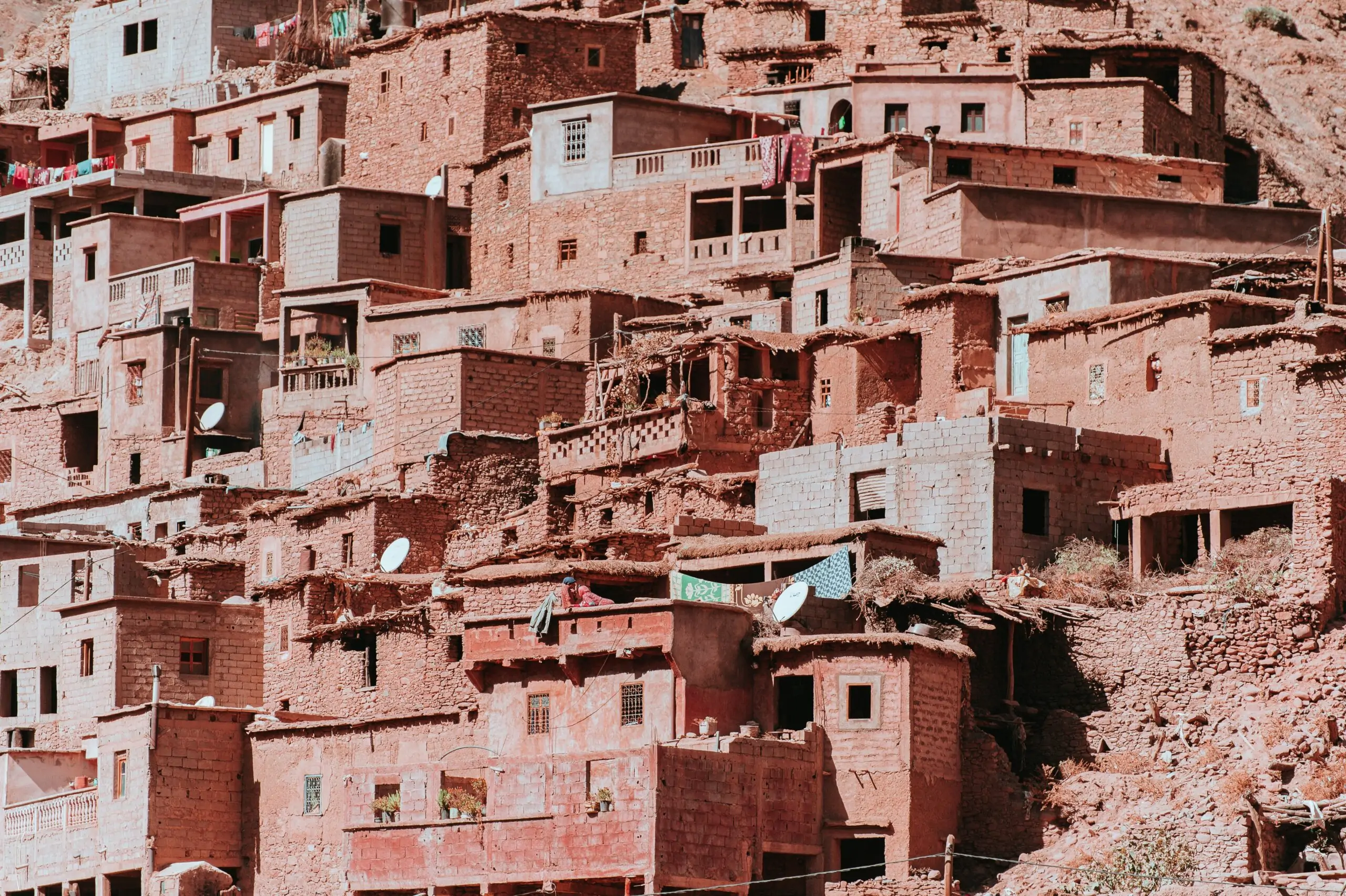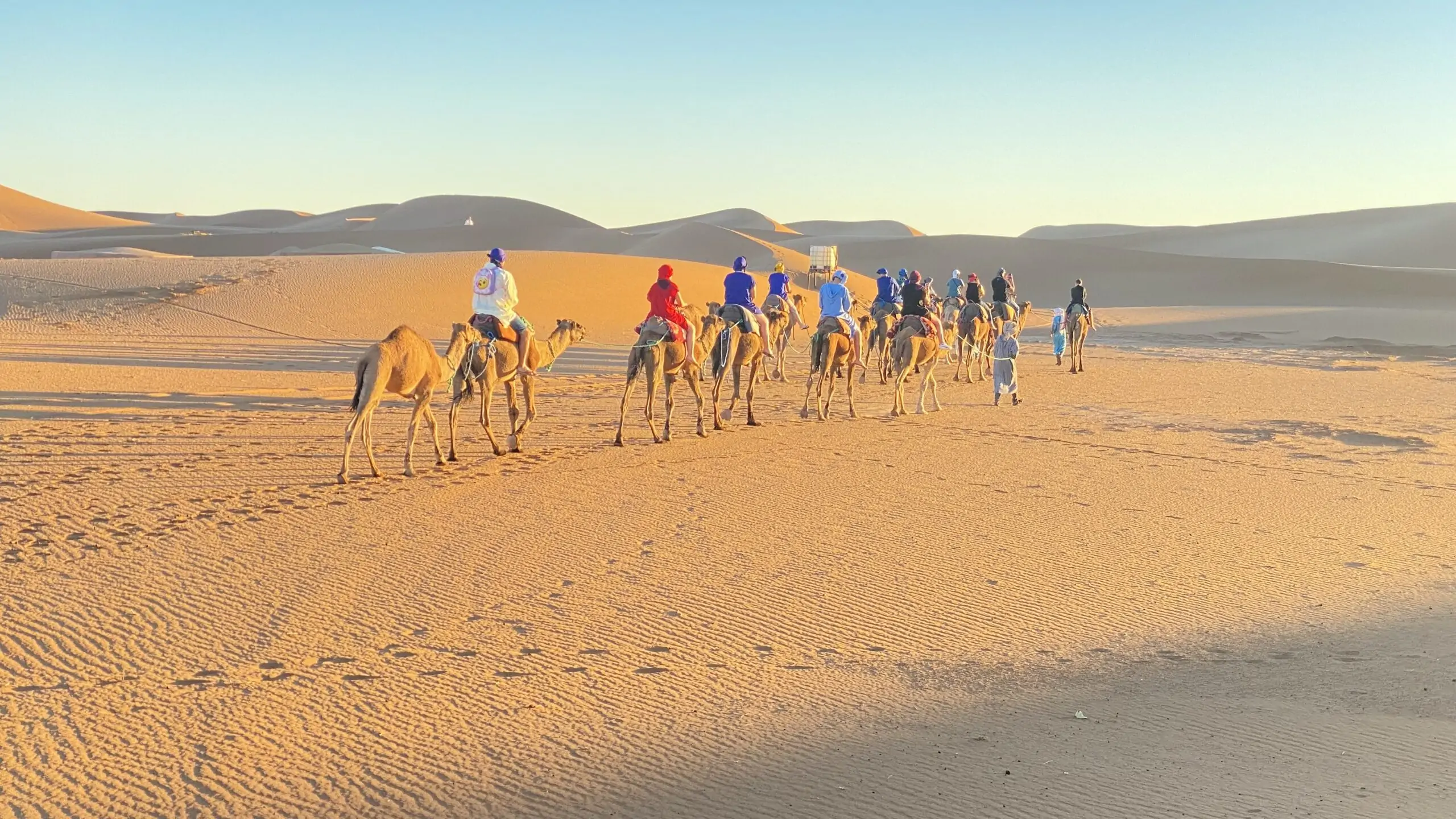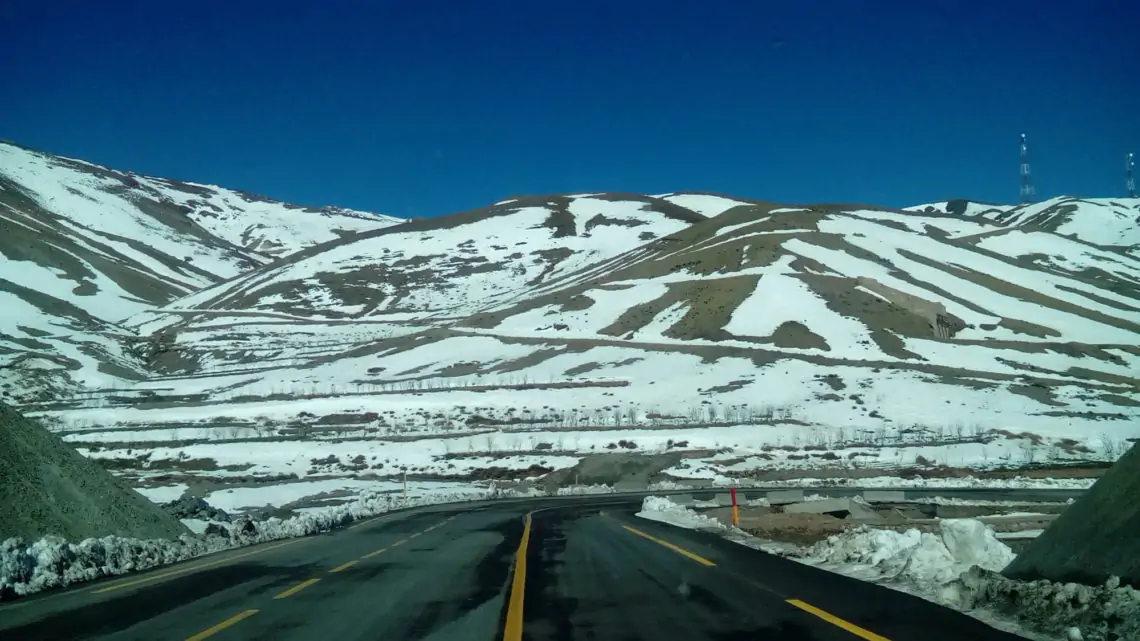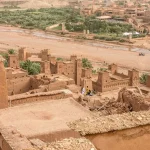
Introduction to the Atlas Mountains
Landscapes of the Atlas Mountains, a majestic mountain range spanning Morocco, are a testament to nature’s grandeur. Situated in the northwest of Africa, these mountains extend approximately 2,500 kilometres and serve as a natural barrier between the Mediterranean Sea and the Sahara Desert. The geographical diversity of the Atlas Mountains is unparalleled, offering adventurers landscapes in Morocco replete with rugged peaks, verdant valleys, and picturesque Berber villages.
Rising to heights of over 4,000 meters, with Mount Toubkal being the highest peak at 4,167 meters, the Atlas Mountains are a haven for hikers and climbers. The range is divided into three distinct sections: the Middle Atlas, the High Atlas, and the Anti-Atlas, each boasting unique features that contribute to the region’s allure. The Middle Atlas, characterized by its cedar forests, offers a lush, green contrast to the surrounding arid landscapes in Morocco. The High Atlas, often referred to as the ‘roof of North Africa,’ is famed for its snow-capped summits and deep gorges. Meanwhile, the Anti-Atlas is known for its dramatic, desert-like terrain.
Beyond the physical beauty, the Atlas Mountains hold significant cultural and historical value. The indigenous Berber people have inhabited these mountains for centuries, and their villages, often nestled in the valleys or perched on mountain slopes, offer a glimpse into a way of life that has remained relatively unchanged. The Berber culture, with its distinctive language, traditions, and architecture, adds a rich cultural tapestry to the region’s natural splendor.
For those seeking adventure, the Atlas Mountains offer a diverse range of outdoor activities. From trekking through scenic trails to exploring the lush valleys and ancient kasbahs, the region caters to both thrill-seekers and those looking to immerse themselves in nature and culture. The Atlas Mountains’ combination of breathtaking Morocco landscapes, rich cultural heritage, and diverse ecosystems makes it a destination worth exploring for any adventurer.
The Rugged Peaks: A Hiker’s Paradise
The Atlas Mountains boast a myriad of peaks that attract hikers from around the globe. Among these, Mount Toubkal Morocco stands as the crown jewel, being the highest peak in North Africa. At an elevation of 4,167 meters, the Mount Toubkal trekking offers an unparalleled hiking experience that combines challenging terrain with breathtaking vistas. The ascent to Toubkal is a favored route for many, featuring well-marked trails that cater to a range of skill levels, from seasoned mountaineers to novice trekkers.
The standard route to Mount Toubkal typically starts from the village of Imlil, a vibrant community that 
Beyond Toubkal, the Atlas Mountains offer a plethora of other peaks suited to different hiking preferences. Jebel Mgoun, the second-highest peak in the range, presents a less-trafficked but equally rewarding adventure. Its trails meander through remote Berber villages and scenic gorges, providing a more secluded experience. The Mgoun Massif is also known for its striking geological formations and diverse ecosystems, making it a haven for nature enthusiasts.
Hikers in the Atlas Mountains can expect to encounter a variety of flora and fauna. The region is home to endemic species such as the Atlas cedar and Barbary macaque. Birdwatchers will be delighted by sightings of the bearded vulture and golden eagle, both of which are native to these highlands. The flora ranges from lush valleys filled with wildflowers in spring to arid, rocky outcrops dotted with resilient shrubs. The Mount Toubkal trek 2 days.
Whether aiming for the lofty heights of Mount Toubkal or exploring the secluded trails of Jebel Mgoun, the Atlas Mountains offer an array of hiking experiences. Each trail promises not only physical challenge but also an immersion into the rich natural and cultural tapestry of the region. For those seeking an unforgettable outdoor adventure, the rugged peaks of the Atlas Mountains truly are a hiker’s paradise.
Verdant Valleys and Scenic Trails
Nestled between the rugged peaks of the Atlas Mountains, Moroccan landscapes, the verdant valleys offer a striking contrast to the surrounding arid landscapes. Among these lush sanctuaries, the Ourika Valley stands out with its rich greenery and vibrant local culture. Located just an hour’s drive from Marrakech, the Ourika Valley is a popular destination for both locals and tourists seeking a respite from urban life. The valley is renowned for its terraced fields, fruit orchards, and traditional Berber villages that dot the landscape, providing a glimpse into the region’s enduring heritage.
Equally enchanting is the Aït Bouguemez Valley, often referred to as the ‘Happy Valley.’ This moniker is well-deserved, as the valley is a haven of peace and natural beauty. The Aït Bouguemez Valley is renowned for its picturesque landscapes, with lush fields of barley and alfalfa framed by the dramatic backdrop of snow-capped peaks. The valley is also home to numerous hiking trails that cater to varying levels of difficulty, making it a paradise for outdoor enthusiasts. One of the most popular trails is the ascent to M’Goun Summit, which offers breathtaking panoramic views and a sense of accomplishment for those who reach the top.
The best times to visit these valleys are during the spring and autumn months when the weather is mild and the landscapes are at their most vibrant. Springtime brings a burst of wildflowers and verdant growth, while autumn showcases a tapestry of golden hues. These seasons also offer ideal conditions for hiking, with clear skies and comfortable temperatures enhancing the experience.
Walking through these valleys, one cannot help but be captivated by the serene beauty and tranquility that permeates the air. The melodic sounds of flowing streams, the rustle of leaves, and the distant calls of shepherds create a harmonious symphony that underscores the enchanting allure of the Atlas Mountains’ verdant valleys.
Picturesque Berber Villages
The Atlas Mountains are not just a geographical marvel; they are also home to the enduring Berber villages, each a testament to a rich cultural heritage. Nestled among the rugged terrain, these villages have managed to preserve their unique identity through centuries of change. The Berber people, known for their hospitality and resilience, live in harmony with nature, and their traditional way of life remains largely intact.
Architecturally, Berber villages are a sight to behold. Houses are typically constructed from locally-sourced materials such as stone and adobe, blending seamlessly with the landscape. The architecture is practical and aesthetically pleasing, with earth-toned walls that mirror the surrounding environment. The layout of these villages often follows the natural contours of the mountains, creating a harmonious balance between human habitation and the natural world.
Culturally, the Berber people are known for their vibrant traditions, which are deeply rooted in their history and daily life. Music, dance, and oral storytelling are integral to their community activities, offering a glimpse into their rich heritage. Visitors can experience this culture firsthand during local festivals or events, which offer a glimpse into the Berber way of life. Notable festivals such as the Imilchil Marriage Festival, where hundreds of couples get married in a mass ceremony, are a unique spectacle that attract visitors from around the world.
For those wishing to explore these villages, it is essential to do so with respect and sensitivity towards the local customs. Engaging with the community can be a rewarding experience, provided visitors follow basic guidelines such as asking for permission before taking photographs and being mindful of cultural norms. Specific villages like Imlil, a popular base for trekking in the Atlas Mountains, and Ait Benhaddou, a UNESCO World Heritage site, offer unique insights into Berber life. These villages not only serve as gateways to the stunning landscapes of the Atlas Mountains but also as cultural havens where ancient traditions continue to thrive.
Panoramic Views and Photography Spots
The Atlas Mountains offer some of the most breathtaking panoramic views, making it a prime destination for photographers. Among the key locations, Toubkal National Park stands out with its majestic vistas, particularly from the summit of Mount Toubkal, the highest peak in North Africa. From this vantage point, photographers can capture the sweeping landscapes of the High Atlas range, especially at sunrise or sunset when the light casts a golden hue over the rugged terrain.
Another noteworthy spot is the Dades Gorge, renowned for its dramatic rock formations and serpentine roads. The gorge offers a unique opportunity to capture the interplay of shadow and light across the canyon walls, best viewed during early morning or late afternoon. The nearby Todra Gorge also offers striking scenery, with its towering limestone cliffs creating a natural frame for landscape shots.
For those seeking expansive views, the Oukaïmeden plateau is an ideal location. As one of the highest ski resorts in Africa, it offers panoramic vistas that are particularly stunning in the winter months when the mountains are blanketed in snow. The plateau is also accessible in the summer, offering a distinct yet equally captivating landscape for photography.
Photographers should not miss the Ait Benhaddou, a UNESCO World Heritage site, which offers a blend of historical architecture and natural beauty. The ancient fortified village, with its kasbahs and surrounding desert, makes for compelling photographs, especially during the golden hour when the light enhances the earthy tones of the structures.
For optimal results, photographers are advised to bring a wide-angle lens to capture the vastness of the landscapes and a tripod to ensure stability during long exposure shots. Early mornings and late afternoons are the best times to shoot, as the soft light during these periods enhances the natural beauty of the Atlas Mountains, creating images that are both dramatic and serene.
Flora and Fauna of the Atlas Mountains
The Atlas Mountains, stretching across Morocco, Algeria, and Tunisia, are home to a diverse range of flora and fauna. This majestic landscape is home to numerous unique species, contributing to its rich ecological tapestry. The flora here varies significantly with elevation and climate, ranging from Mediterranean woodlands to alpine meadows. Among the endemic plant species, the Atlas cedar (Cedrus atlantica) stands out prominently, thriving in the higher altitudes. Other native plants include the Moroccan fir (Abies marocana) and the Atlas poplar (Populus atlantica), which contribute to the region’s rich biodiversity.
Equally fascinating is the fauna of the Atlas Mountains. The Barbary macaque (Macaca sylvanus), an endangered primate, is perhaps the most well-known resident. These social animals can be observed in the cedar forests, particularly in the Middle Atlas range. Other notable species include the Barbary leopard, though sightings are rare due to its elusive nature. Birdwatchers can delight in spotting the endangered Lammergeier vulture, golden eagles, and a variety of migratory birds that traverse this region.
For those eager to observe wildlife, responsible practices are paramount. Visitors should maintain a respectful distance, refrain from feeding the animals, and follow designated trails to minimize their environmental impact. Guided tours offer an informative and eco-friendly way to explore the region, ensuring the preservation of these natural habitats.
Conservation efforts in the Atlas Mountains are ongoing, with several initiatives aimed at protecting endangered species and their habitats. National parks, such as Toubkal National Park, play a crucial role in these efforts, serving as a sanctuary for wildlife and promoting sustainable tourism. Local and international organizations collaborate to address challenges such as deforestation, climate change, and human-wildlife conflict, ensuring the Atlas Mountains remain a vibrant ecosystem for future generations.
Practical Tips for Adventurers
When planning an expedition to the Atlas Mountains, preparation is key to ensure a safe and enjoyable experience. The best times to visit are during the spring (March to May) and autumn (September to November) when the weather is mild and conditions are optimal for hiking. Summer can be excessively hot, especially in the lower elevations, while winter often brings heavy snowfall to the peaks, making trekking more challenging.
It is essential to pack appropriately for the diverse climate and varied terrain of the Atlas Mountains. Layered clothing is advisable, as temperatures can fluctuate significantly between day and night. A sturdy pair of hiking boots is indispensable for navigating rocky trails and uneven paths. Additionally, a high-quality backpack, sun protection (including a hat and sunscreen), and a reliable water bottle with a purification system are crucial items. Don’t forget to include a basic first aid kit and a map or GPS device.
Given the rugged nature of the Atlas Mountains, physical preparation is also important. Regular cardio and strength training exercises can help build the endurance needed for long hikes. Acclimatization to higher altitudes should not be overlooked; spend a few days at intermediate elevations before attempting more strenuous climbs to reduce the risk of altitude sickness.
Safety should always be a top priority. Always inform someone of your itinerary and expected return time. Familiarize yourself with the local wildlife and maintain a safe distance from animals. Carrying a whistle and a flashlight can be helpful in case of emergencies. It is also advisable to travel with a companion or join a group tour.
For those unfamiliar with the region, hiring a local guide or booking through a reputable tour operator can greatly enhance the experience. Guides possess invaluable knowledge of the terrain, culture, and hidden gems of the Atlas Mountains. Recommended operators include Mountain Voyage Morocco and Berber Travel Adventures, both of which are known for their expertise and commitment to safety.
By following these practical tips, adventurers can look forward to a memorable and safe journey through the majestic landscapes of the Atlas Mountains.
Conclusion: Embracing the Atlas Mountains Experience
The Atlas Mountains, with their majestic landscapes, offer an unparalleled blend of natural beauty, cultural richness, and thrilling adventures. From the verdant valleys and towering peaks to the traditional Berber villages and vibrant markets, every corner of this magnificent range presents a unique opportunity for discovery and exploration. Throughout this blog post, we have explored various aspects of the Atlas Mountains, highlighting the diverse ecosystems, historical significance, and numerous outdoor activities that await travelers.
Embracing the Atlas Mountains experience means immersing oneself in the breathtaking scenery, from the snow-capped heights of Mount Toubkal to the lush Aït Bouguemez Valley. It is an invitation to trek through rugged terrains, uncover hidden waterfalls, and bask in the serenity of alpine lakes. Moreover, the mountains are a cultural tapestry, woven with the traditions and customs of the Berber people, who inhabit the region and warmly welcome visitors into their homes and way of life.
As you consider your next adventure, let the Atlas Mountains captivate your imagination. Picture yourself navigating the ancient trails, savoring the local cuisine, and forging connections with the hospitable locals. Whether you are an avid hiker, a history enthusiast, or someone seeking tranquility away from the hustle and bustle, the Atlas Mountains cater to all tastes and preferences, ensuring a memorable and transformative journey.
So, why not leap and explore the majestic landscapes of the Atlas Mountains? Allow yourself to be enchanted by the natural splendor, inspired by the rich cultural heritage, and exhilarated by the numerous outdoor pursuits. The Atlas Mountains beckon with open arms, ready to offer an unforgettable experience that will leave an indelible mark on your soul. Embark on this adventure and embrace the wonders that await in this extraordinary part of the world.







